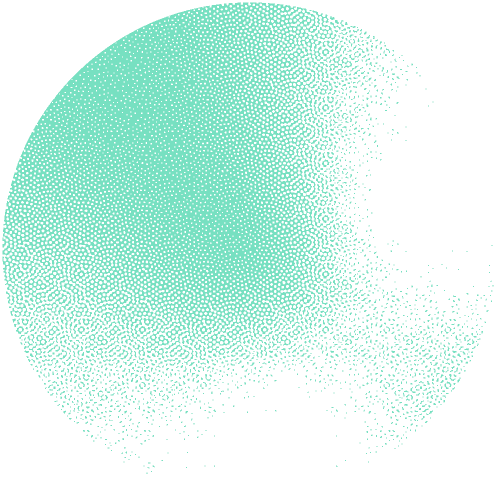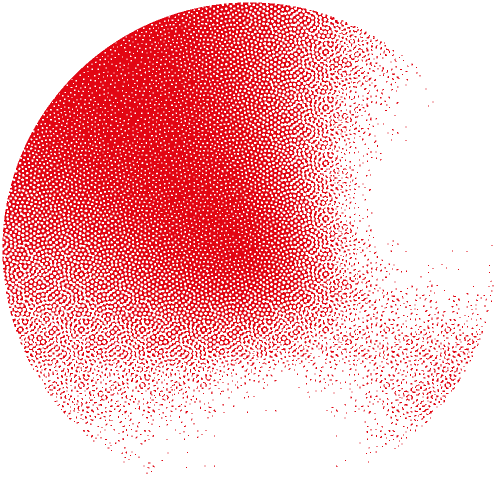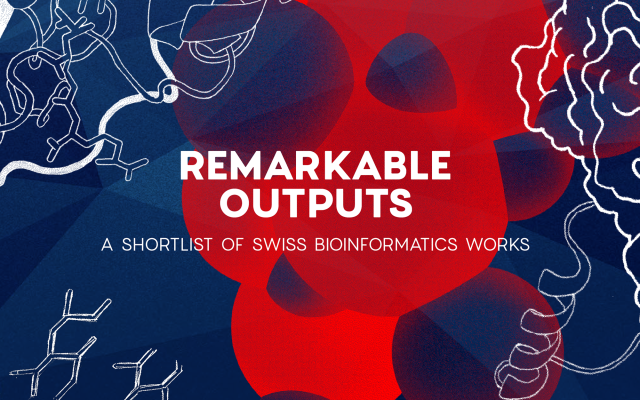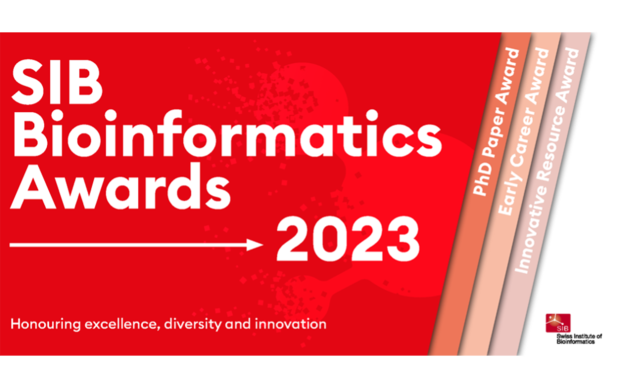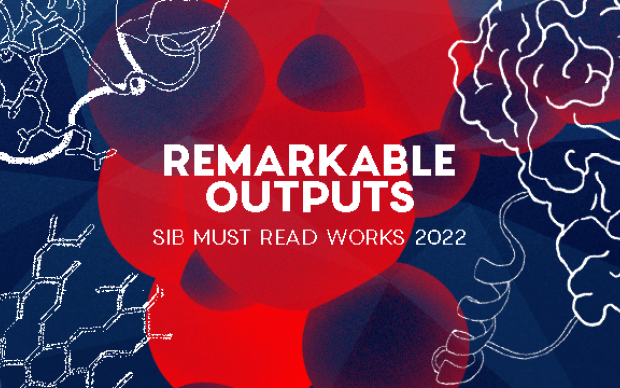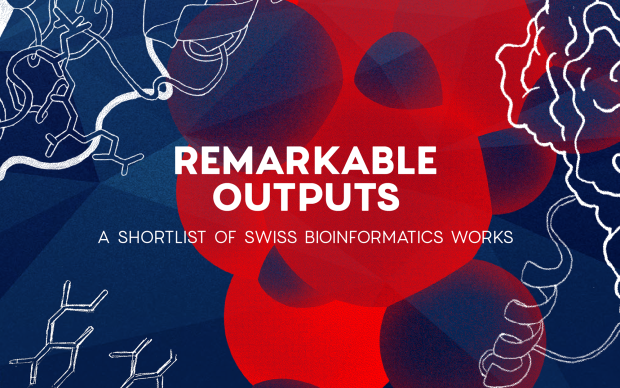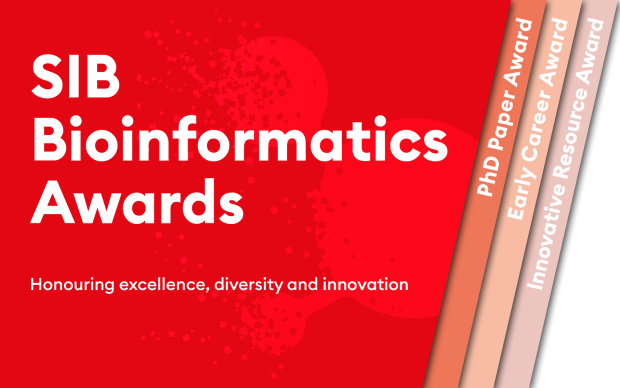Staying abreast of the latest advances and bright ideas emerging in a field as diverse as bioinformatics is challenging. The SIB Remarkable Outputs provide the global community with a shortlist of outstanding works produced during the year by our members. These outputs, selected by the SIB Award Committee, can include peer-reviewed publications, preprints, resources, software tools, databases, outreach programmes, science advocacy, etc.
-
Clustering the universe of AI-predicted protein structures
SIB GROUPS INVOLVED: Cellular consequences of genetic variation, led by Pedro Beltrao, Zurich
In collaboration with the Steinegger Lab led by Martin Steinegger, Seoul, among other contributors.Related resources: https://cluster.foldseek.com/, SIB News
AlphaFold has led to the prediction of structures for hundreds of millions of proteins, which come in all shapes and sizes. The question is: how many of these looks alike and what does this tell us about their function? The study clustered the AlphaFold protein structures into around 2 million clusters of related proteins to study their novelty and evolution, made accessible through a user-friendly web-interface: AlphaFold Clusters.
What the committee said about the work: “Recognized by nearly 50 citations since its publication, this work has significantly contributed to the field of life science by providing a meticulously organized, readily accessible, and freely available dataset of protein clusters.”
-
Decoding the link between tissue architecture and cell plasticity
SIB GROUP INVOLVED: Computational Systems Oncology, led by Giovanni Ciriello, Lausanne.
Related resource: in silico talk
CellCharter is a computational framework designed to uncover and analyze communities of cells within tissues. Its primary goal is to reveal how distinct types of cell band together and function in targeted areas. This provides deeper insights into cellular behavior and interactions in various biological environments, such as cancer.
What the committee said about the work: “CellCharter is a remarkable tool to identify, characterize and compare cell communities in spatial -omics datasets. It integrates existing approaches and provides a generally applicable, performant method.”
-
Finding Open and FAIR bioinformatics training materials with Glittr.org
SIB GROUPS INVOLVED: Training, led by Patricia Palagi & SIB’s IT, Lausanne.
The online software development platforms GitHub and GitLab are full of excellent bioinformatics training materials, but they can be challenging to find. Glittr.org enables users to effortlessly find, compare and reuse these materials.
What the committee said about the work: “Glittr.org provides a unique portal to search for and access a variety of publicly available training material. Making training resources FAIR is a particularly important contribution, which Glittr.org managed to achieve in a noticeably short amount of time.”
-
Improved predictions of antigen presentation reveal new structural insights
SIB GROUPS INVOLVED: Computational Cancer Biology, led by David Gfeller, in collaboration with Computer-aided Molecular Engineering, led by Vincent Zoete, Lausanne.
In this study, a large set of ligands targeted by specific immune cells is collected and curated. Combined with advanced machine learning, it improves predictions of which potentially harmful molecules activate immune responses. This study further reveals a unique way some of these ligands bind to their receptor. These results may contribute to accelerating personalized immunotherapy approaches in autoimmune diseases or cancer.What the committee said about the work: “This study represents a significant scientific breakthrough, as it shifts the paradigm in the understanding of MHC Class II peptides and their recognition by CD4+ T cells. It will be directly relevant in the design of therapeutic treatments for immune diseases and cancers.”
-
Mining tumor mutation trees for evolution-guided precision oncology
SIB GROUP INVOLVED: Computational Biology Group, led by Niko Beerenwinkel, Basel.
Understanding cancer evolution is crucial for developing effective therapies. By learning reproducible evolutionary patterns and complex interactions among cancer mutations, TreeMHN can better predict tumor progression and facilitates evolution-guided precision oncology.
What the committee said about the work: “TreeMHN’s computational method represents outstanding progress in the life science field. It enables a better processing of single cell-based tumor mutation data for the representation and potentially prediction of cancer trajectories.”
-
Navigate the vast universe of proteins
SIB GROUP INVOLVED: Computational Structural Biology, led by Torsten Schwede, Basel.
The Protein Universe Atlas is a web-service which allows users to navigate a universe populated with millions of known proteins. In this representation, proteins of known function are bright stars, protein families are galaxies, etc. This universe also contains proteins whose function cannot yet be predicted.
What the committee said about the work: “The Protein Universe Atlas is a groundbreaking resource for exploring the diversity of proteins. Its user-friendly web interface empowers researchers, biocurators and students in navigating the “dark matter” to explore proteins of unknown function.”
-
Predicting how single cells react to perturbations
SIB GROUPS INVOLVED: Biomedical Informatics, led by Gunnar Rätsch, Zurich
In collaboration with: Learning & Adaptive Systems Group, led by Andreas Krause, and the Pelkmanslab, led by Lucas Pelkmans, Zurich, among other contributors.CellOT is a framework to learn and predict the complex perturbation responses of individual cells. Utilizing recent advances in optimal transport, CellOT can predict even the finest-grained details of perturbations opening the path towards a better understanding of cell therapies, the study of drug responses from patient samples, and an improved accounting for cell-to-cell variability in large-scale drug design efforts.
What the committee said about the work: “The paper is a significant step forward in terms of understanding the heterogeneous response of different cell states to environmental perturbations. It may impact drug discovery in the future.”
